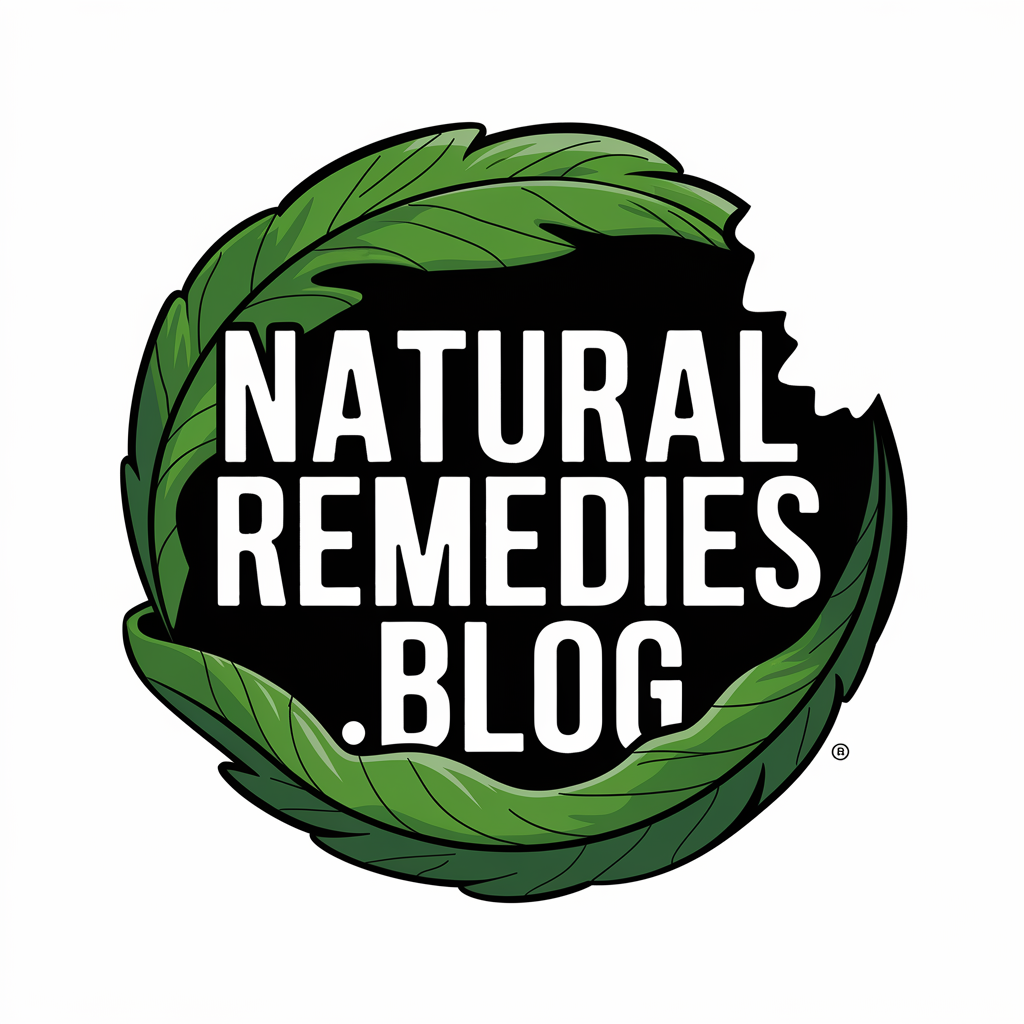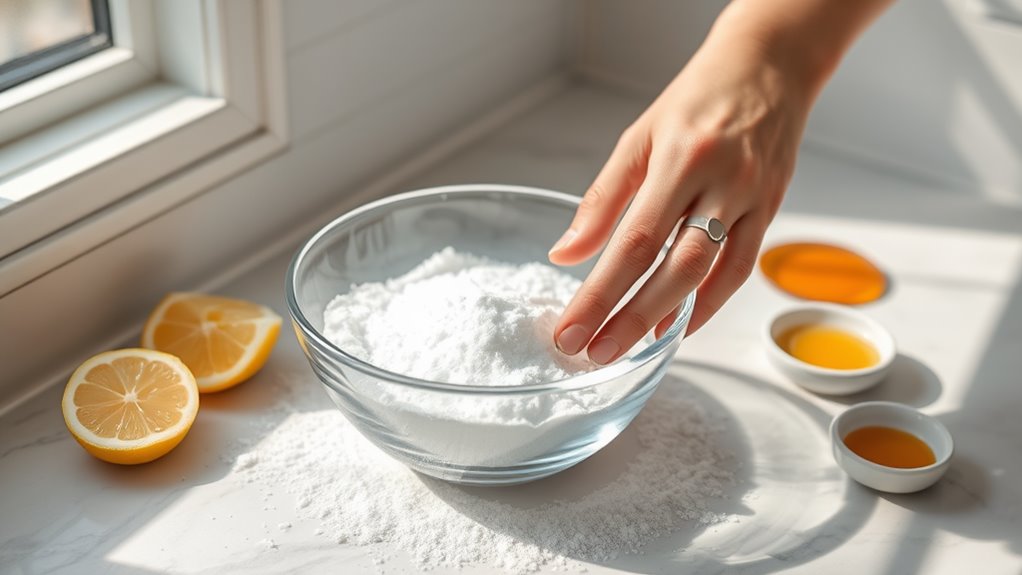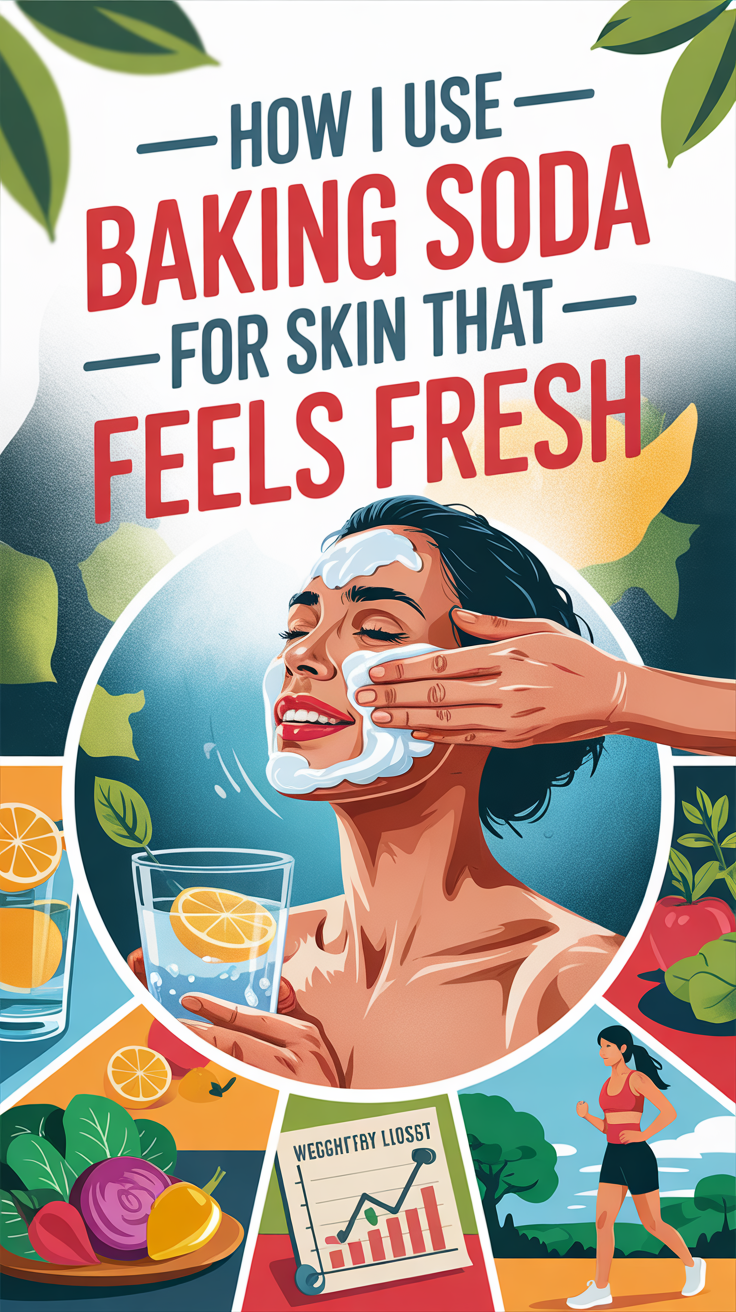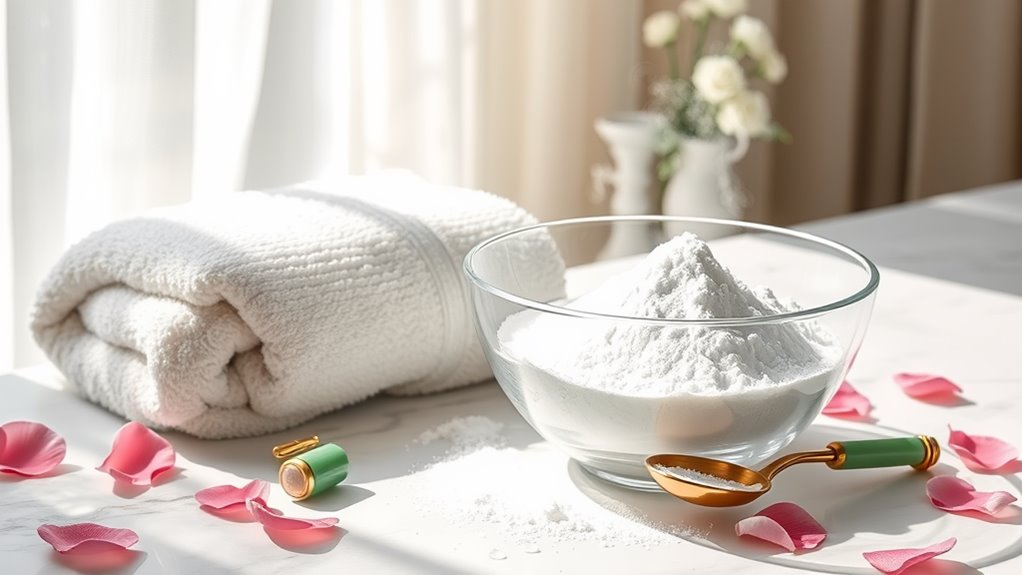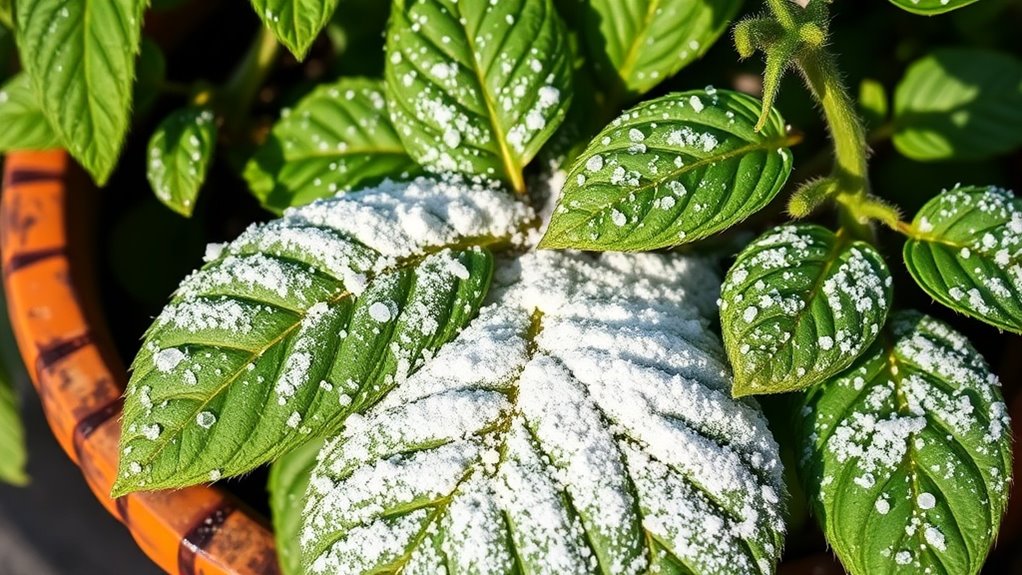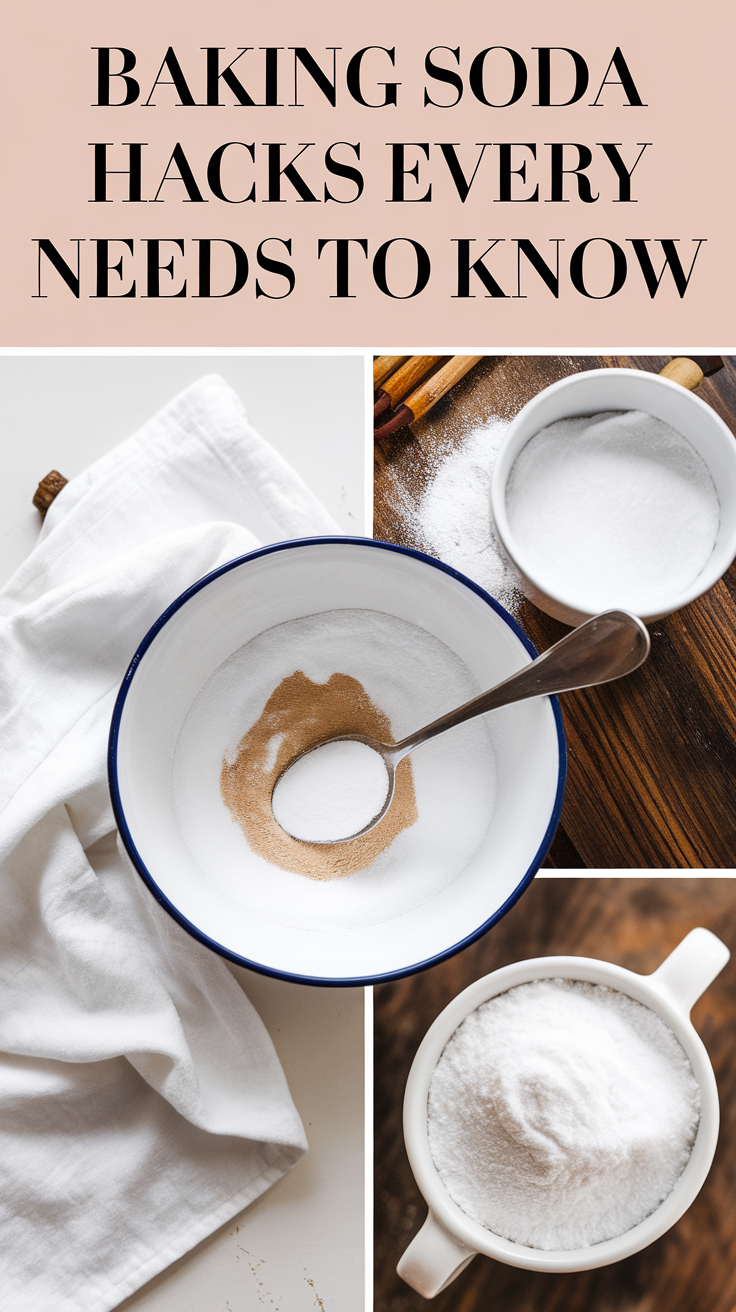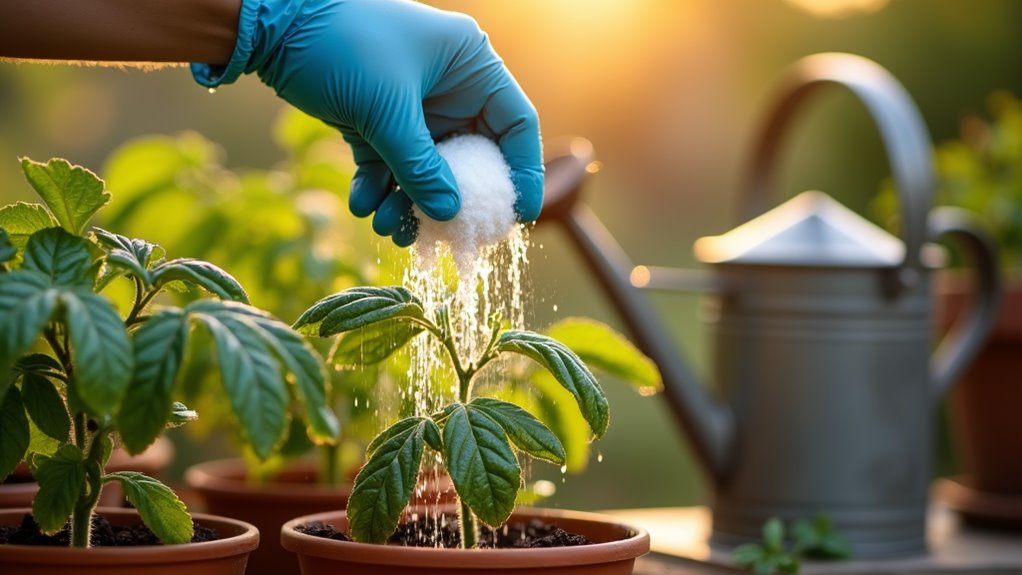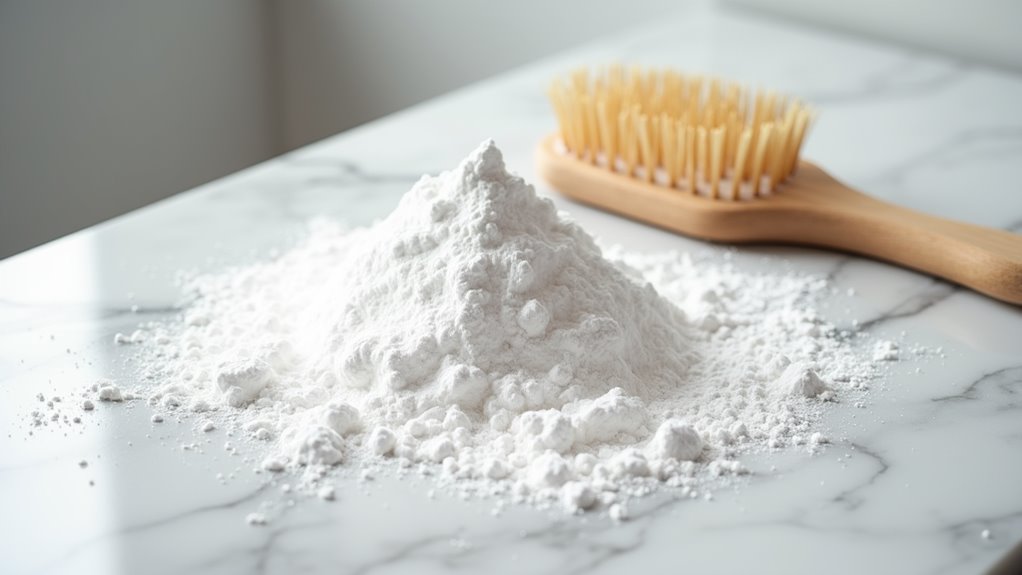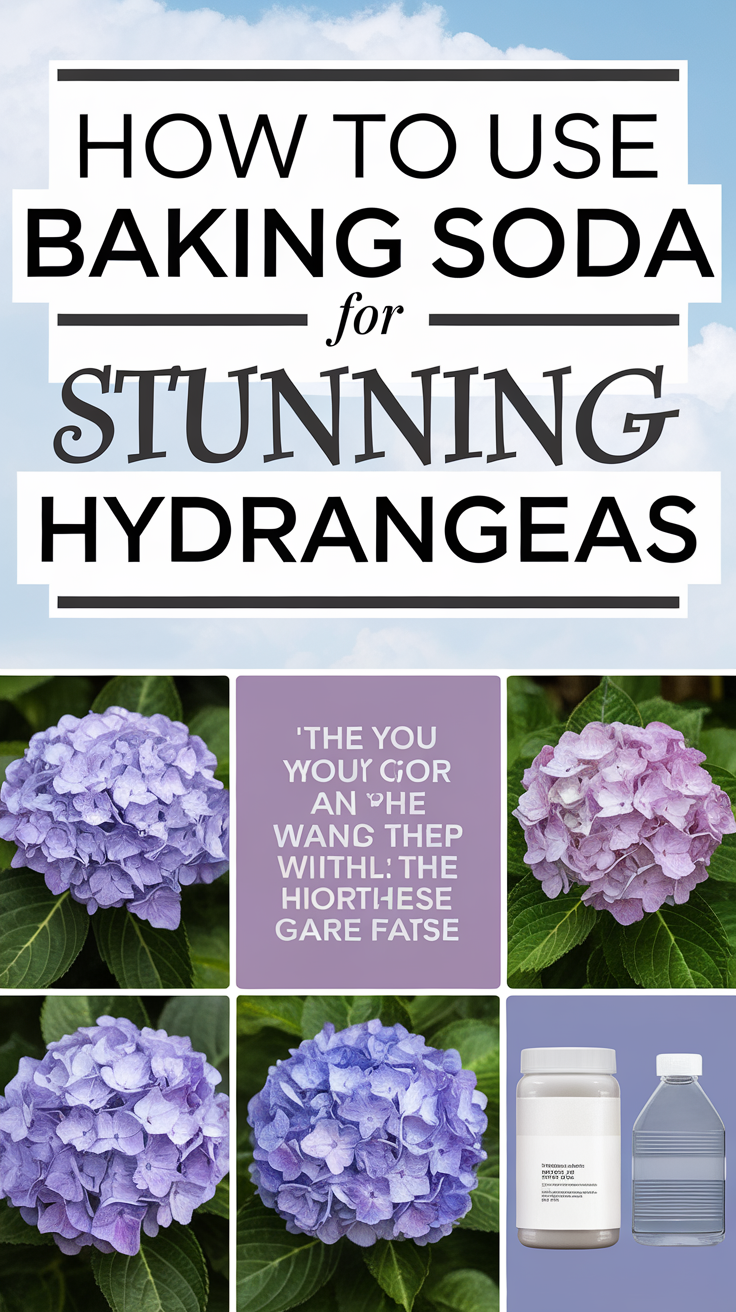How I Use Baking Soda for Skin That Feels Fresh
To use baking soda for fresh-feeling skin, mix two teaspoons with warm water to form a paste. Apply it gently in circular motions, letting it sit for about 10 minutes. This natural exfoliator unclogs pores, balances pH, and fights acne. Rinse thoroughly and follow with a good moisturizer to keep your skin hydrated. If you’re targeting specific skin issues or want tips on incorporating it into your routine, you’ll find valuable insights ahead.
Understanding the Benefits of Baking Soda for Skin
While you may not think of baking soda as a skincare staple, it offers a variety of benefits for your skin that make it worth considering.
A baking soda face mask can effectively combat acne-causing bacteria due to its natural antiseptic properties. It can also soothe irritated skin from sunburns or razor burns, providing much-needed relief. Additionally, its mild exfoliating action unclogs pores and prevents blackhead formation, enhancing your skin’s texture. By regulating pH levels and absorbing excess oils, baking soda helps maintain that fresh, balanced look. Furthermore, its natural antibacterial properties enhance its ability to fight acne and reduce inflammation. Consider incorporating this simple ingredient into your skincare routine! Using baking soda as a mildly abrasive exfoliant can enhance the removal of dead skin cells and grime for a smoother complexion.
How to Prepare a Baking Soda Paste
Creating a baking soda paste is quick and easy, making it a fantastic addition to your skincare routine. Here’s how to whip it up:
-
Combine 2 teaspoons of baking soda with a small amount of warm or lukewarm water.
-
Mix until you achieve a thick, even consistency, adding honey for extra moisture if you’d like. Baking soda is known for its alkaline nature, which can help neutralize skin acidity and act as a natural exfoliant by removing dead skin cells.
-
Apply gently with your fingertips or use as part of a scrub, massaging in circular motions.
-
Let it sit for 10 to 15 minutes, then rinse thoroughly with warm water.
Don’t forget to follow up with a moisturizer to keep your skin hydrated!
My Favorite Bath Soak Recipe
After you’ve enjoyed a soothing baking soda paste treatment for your skin, why not elevate your self-care routine with a relaxing bath soak?
For an indulgent experience, combine one cup of baking soda, one cup of Epsom salt, and a few drops of lavender essential oil in warm water. Baking soda is known for its antifungal and pH-balancing effects, which can further enhance the soothing properties of your soak. In addition to this, the mild antiseptic solution created by baking soda when dissolved can help reduce inflammation and promote healing. Dissolve the baking soda completely before filling the tub with cold water to adjust the temperature.
Soak for 20-30 minutes to relieve irritation and enhance relaxation. After your bath, don’t forget to moisturize your skin with natural oils for ultimate hydration and softness.
Enjoy your rejuvenating soak!
Incorporating Baking Soda Into My Skincare Routine
Incorporating baking soda into your skincare routine can be a game-changer for achieving smooth, healthy skin.
Here’s how you can effectively use it:
- Facial Washing: Use it as a mild abrasive in your facial wash to unclog pores.
- Exfoliation Frequency: Limit use to one or two times a week to avoid irritation.
- Application Method: Mix baking soda with water to create a paste, applying it in circular motions. Additionally, baking soda’s exfoliating properties help remove dead skin cells and brighten your complexion. Its natural antibacterial properties also contribute to reducing acne breakouts.
- Customization: Tailor your DIY recipes to include baking soda for personalized care.
Remember to moisturize afterward to maintain hydration and balance your skin’s pH!
Targeting Specific Skin Conditions With Baking Soda
Wondering how baking soda can address specific skin conditions? It’s a versatile ally against acne, eczema, psoriasis, and general skin irritations.
For acne, its antibacterial properties help control breakouts while exfoliating dead skin cells. You can create a paste with water and apply it to affected areas for relief. Incorporating a small amount of baking soda into your skincare routine can enhance its effectiveness.
If you struggle with eczema, adding baking soda to a warm bath can soothe itching. Similarly, it may provide comfort for psoriasis through soaking baths.
For minor irritations, baking soda paste calms redness.
Safety Tips for Using Baking Soda on Skin
When using baking soda on your skin, always remember to dilute it first to minimize irritation. It’s also crucial to perform a patch test before applying it more broadly, and keep your usage frequency in check to avoid potential skin damage. Long-term use can lead to increased sensitivity and irritation if not used carefully.
Dilution Is Essential
To ensure safe and effective use of baking soda on your skin, proper dilution is crucial.
Here are some essential guidelines to follow:
- General ratio: Use 1 teaspoon of baking soda per 1 cup of water for face and body applications.
- Spot treatments: For acne, mix a 1:2 ratio of baking soda to water.
- Bath use: Dissolve 1/4 cup of baking soda in warm bathwater for soaking.
- Avoid undiluted use: Direct application can cause micro-tears and disrupt skin pH.
Always check for complete dissolution and remember to follow up with a pH-balanced moisturizer.
Patch Test Required
Before applying baking soda to your skin, it’s vital to conduct a patch test.
Start by diluting the baking soda and applying a small amount to your inner forearm. Rinse it off after a few minutes and wait 24 hours.
Check for any redness, irritation, or swelling. If you notice adverse reactions, discontinue use.
Also, avoid using baking soda on broken skin or open wounds, and consult a healthcare professional if you’re pregnant, nursing, or have pre-existing conditions.
If you’re testing essential oils, perform a separate patch test to watch for sensitivity.
Your skin’s safety comes first!
Limit Application Frequency
Limiting how often you apply baking soda on your skin is essential for maintaining its health and balance.
To ensure safe use, remember these guidelines:
- Apply baking soda treatments no more than once or twice a week to prevent over-exfoliation.
- Avoid daily application, as it can disrupt your skin’s natural pH balance.
- Keep contact time short—10 to 15 minutes for masks and 20 minutes for spot treatments.
- Always follow up with a moisturizer to lock in hydration and minimize dryness.
Moderation is key to achieving fresh, healthy skin without adverse effects.
My Personal Experiences and Results
I’ve explored the use of baking soda on my skin, and the results have been quite revealing.
When I applied a baking soda paste for inflammation, I noticed a slight reduction in acne after about 15 minutes. However, I was careful to limit this use, as I experienced some dryness.
My warm baking soda baths provided sweet relief for eczema, easing itching without disrupting my skin barrier—just remember to moisturize afterward. Incorporating anti-bacterial properties from raw honey and oils can enhance the effectiveness of the mask as well.
Though my psoriasis saw some improvement, it’s essential to keep expectations realistic.
When to Seek Professional Advice
If you experience persistent skin issues like acne that just won’t budge, it’s time to reach out to a professional.
Severe reactions to products can signal a need for expert help, especially if your skin’s not responding to home remedies.
Don’t hesitate to seek advice when you’re unsure of how to manage your skin concerns effectively. Additionally, understanding when to seek professional help can be crucial for addressing more serious conditions or symptoms.
Persistent Skin Issues
Persistent skin issues can be frustrating, especially when home remedies and over-the-counter products fail to provide relief.
If you experience any of the following, it’s time to seek professional advice:
- Your skin problems don’t improve with standard care.
- You notice sudden changes in your skin or worsening of existing conditions.
- Symptoms cause pain or interfere with daily life.
- Unusual lesions, extensive redness, or scaling appear.
A dermatologist’s evaluation can lead to a proper diagnosis and an effective treatment plan, ensuring you get the relief you deserve while preventing further complications.
Don’t hesitate to reach out for help!
Severe Reactions Symptoms
While seeking professional advice for persistent skin issues is important, it’s equally vital to recognize severe reactions that may arise from treatments like baking soda.
If you notice immediate redness, burning, or a rash, stop using it right away.
Look out for visible dryness, cracks, or open wounds as these can signal physical damage.
Systemic symptoms like dizziness or a widespread rash require urgent attention.
Don’t ignore pre-existing conditions—diabetics and those with chronic skin issues may experience worsened reactions.
Lastly, if irritation worsens despite discontinuation, it’s time to consult a healthcare professional before further damage occurs.
Unresponsive Home Remedies
Are you tired of trying home remedies that just don’t seem to work? It might be time to seek professional advice if you notice any of these signs:
- Persistent irritation like redness or itching that doesn’t fade.
- Aggravation of existing conditions such as worsening acne or eczema.
- Ineffectiveness of natural ingredients, with no improvements or stability.
- Emergence of complications, including infections or allergic reactions.
When skin problems escalate or don’t improve, don’t hesitate to consult a dermatologist.
Your skin deserves expert care beyond DIY solutions.
